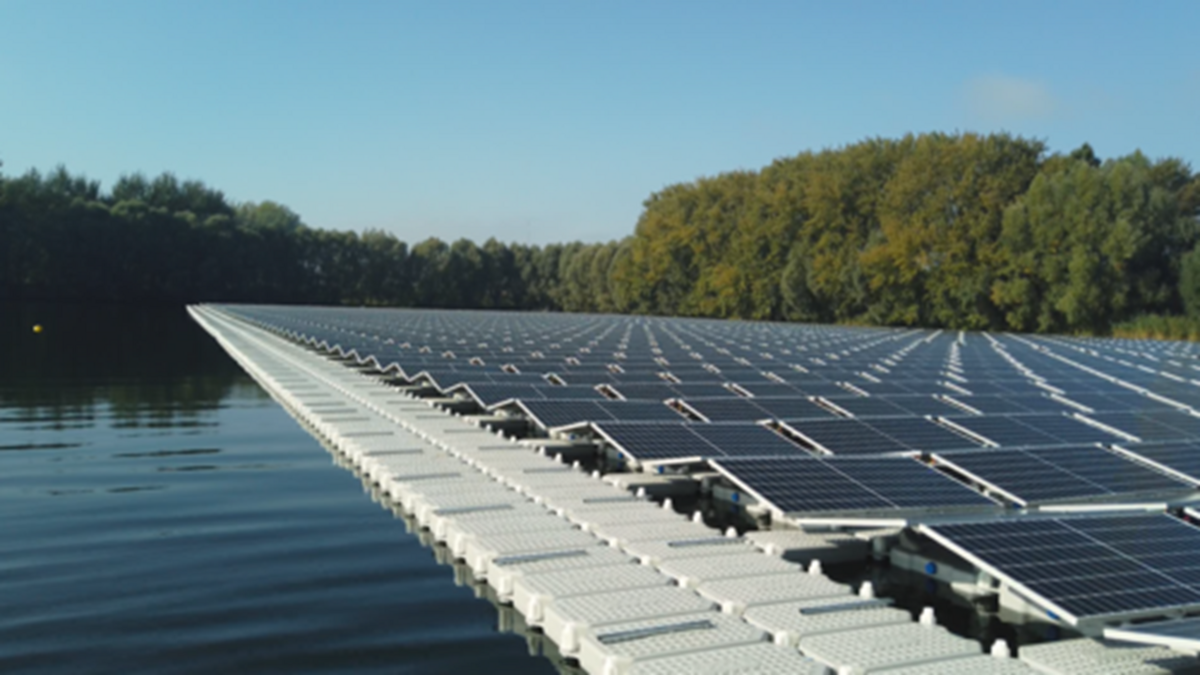PV2Float: Solar modules are to learn to float on Lake Mortka
- RWE, Fraunhofer ISE and BTU Cottbus-Senftenberg present "PV2Float" research project to local council
- Focus on technical development of PV systems and environmental compatibility
- Construction could start before the end of 2023
- Research project includes construction, operation and subsequent dismantling of the floating solar plant
"Lake Mortka was once created by the flooding of the Werminghoffer open-cast lignite mine. Now it could become a research site for the energy transition. Floating solar plants make it possible to use selected open pit lakes, which are not subject to tourist use and development, for green power generation. This holds additional potential for the energy turnaround in our region," said Thomas Leberecht, mayor of the Lohsa municipality, at the municipal council meeting.
RWE Renewables, the Fraunhofer Institute for Solar Energy Systems ISE and the Brandenburg University of Technology Cottbus-Senftenberg (BTU) want to implement the research project "PV2Float" on a very small part of Lake Mortka (storage basin Lohsa I) and show that floating solar plants can be realized in harmony with the water ecology.
Project leader Dr. Stefan Wieland of Fraunhofer ISE said of the advantages of floating solar systems, "Photovoltaic modules heat up less over water surfaces than on land, which translates into higher electricity yields for floating systems than for comparable classic ground-mounted solar systems."
The project partners plan to test various plant systems on Lake Mortka to further develop the technology. If approval is granted, construction could begin this year.
Ina Jaspers, from RWE's solar division, explained: "We would like to investigate four different plant variants on Lake Mortka. With an output of around 30 kilowatts each, these systems are relatively small. But they will provide us with important insights, such as which technological solution is the best, how costs can be further reduced and how even larger, floating solar systems can be implemented in an even more environmentally compatible way. We also want to build a reference plant on land - also with an output of 30 kilowatts. We are currently looking around for a suitable location for this."
Due to the structure of its lake basin, the water quality and its colonization by plants and animals, Lake Mortka offers good conditions for research by the BTU Cottbus-Senftenberg on the ecological compatibility of floating solar plants. For interested citizens, comprehensive material will be made available on a website during the entire project duration of the research project "PV2Float". Residents will also have the opportunity to participate in an information event. The research project, which is funded by the German Federal Ministry of Economics and Climate Protection, includes the construction, operation and subsequent dismantling of the floating solar plant.
With RWE, Fraunhofer ISE and BTU Cottbus-Senftenberg, competent partners are involved in the implementation: RWE has many years of experience in the construction and operation of ground-mounted solar plants and already operates a photovoltaic plant on a former cooling water lake in the Netherlands. Fraunhofer ISE, Europe's largest solar research institute, is developing solutions for floating photovoltaics and other integrated photovoltaic technologies. BTU Cottbus-Senftenberg has extensive scientific expertise in the field of aquatic ecology.
Floating photovoltaic power plants
Floating photovoltaic power plants (FPV for short) are a relatively new concept that enables the expansion of renewable energies without taking up new land areas. In order to create the technical, ecological and socio-economic conditions for tapping the potential on bodies of water for renewable electricity generation, an interdisciplinary consortium from research, development and business is investigating the opportunities and challenges of FPV in PV2FLOAT with a view to subsequent economic implementation on a megawatt scale.
In Germany, the use of open-cast lignite mines is a realistic potential. For FPV to be approved, it is essential that the plants do not have a negative impact on water bodies. The focus of the BTU's participation in the project is therefore on investigations into the effects of FPV on water ecology. This includes, in particular, observations of changes in the physical properties of the water body at the site of the FPV test facility and the resulting ecologically effective reactions with regard to biological structures and processes. The scientists are also investigating the significance of the introduction of fixed structures by FPV plants into the water habitat with their potential for the settlement of fixed organisms locally and with regard to the overall ecosystem. In cooperation with the Institute for Water and Soil Dr. Uhlmann in Dresden, the findings gained at the experimental plant will be transferred to plants of different sizes through physical lake modelling.

